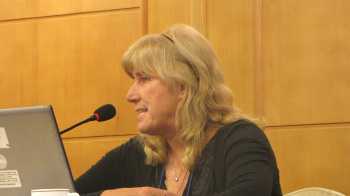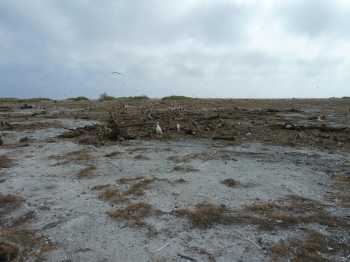Crystal Krause of the Pacific Islands Ecosystem Research Center and colleagues presented a paper with the title "Black-footed Albatross management in the face of sea level rise" at the 19th Annual Hawai‘i Conservation Conference; Island Ecosystems: The Year of the Forest, held over 2-4 August 2011 in Honolulu, Hawaii, USA. The conference was organized by the Hawai'i Conservation Alliance.
The paper's abstract follows:
"Understanding the dynamics of climate change on small island populations of breeding seabirds is essential for future management strategies to prevent species population declines and extinctions. Small islands are predicted to be especially vulnerable to the effects of climate change such as sea-level rise, severe storms, and wash over events. Sea-level rise could lead to a reduction of island size, shrinking already limited habitat for the 14 million seabirds that use the small low lying islands of the Northwest Hawaiian Islands (NWHI). Climate change scenarios predict an increase in storm intensity and changes in habitat conditions that could cause high mortality in many breeding seabird colonies. The resilience of seabird population toward more frequent extreme events due to climate change is a topic of interest to managers. The role of density dependence on the nesting biology of colonially nesting seabirds is also unknown, and species flexibility to establish successful new colonies on higher ground in the Hawaiian Islands given sea level rise is also uncertain given the numerous introduced predators that have invaded the main Hawaiian Islands. Mammalian predators on high elevation islands, along with strong natal philopatry could hinder colony establishment of the main Hawaiian Islands less vulnerable to sea level rise impacts. We used structured decision making to identify the best sequence of actions to help protect the BFAL [Black-footed Albatross Phoebastria nigripes] against sea level rise and support the goals set out in the Albatross Action Plan, USFWS Seabird Conservation Plan."
One of the presentation's authors, Beth Flint, presented a similar talk to the Joint Meeting of the Breeding Sites and the Status and Trends Working Groups of the ACAP Advisory Committee, in Guayaquil, Ecuador on 26 August. Her talk also covered the effects of the 2011 tsunami on the Northwest Hawaiian Islands.

Beth Flint addresses ACAP delegates about climate change and tsumani effects on North Pacific albatrosses in Guayaquil
Photograph by John Cooper


Eastern Island, Midway Atoll, before and after the 2011 tsunami
Photographs by the U.S. Fish and Wildlife Service
Lindsay Young, ACAP Pacific News Correspondent and colleagues presented two co-authored papers entitled "Restoring coastal ecosystems: the story of Hawai‘i's first predator-proof fence at Ka‘ena Point Natural Area Reserve" and "Relationships among substrate, seabirds, and vegetation at Ka‘ena Point, a recovering Hawaiian ecosystem" at the Hawaii Conference. Ka'ena Point supports a breeding population of Laysan Albatrosses P. immutabilis. Click here to access these abstracts and to see what other papers on seabirds were presented at the conference.
With thanks to Beth Flint, Pacific Reefs National Wildlife Refuge Complex, U.S. Fish and Wildlife Service for information.
John Cooper, ACAP Information Officer, 29 August 2011

 Français
Français  English
English  Español
Español